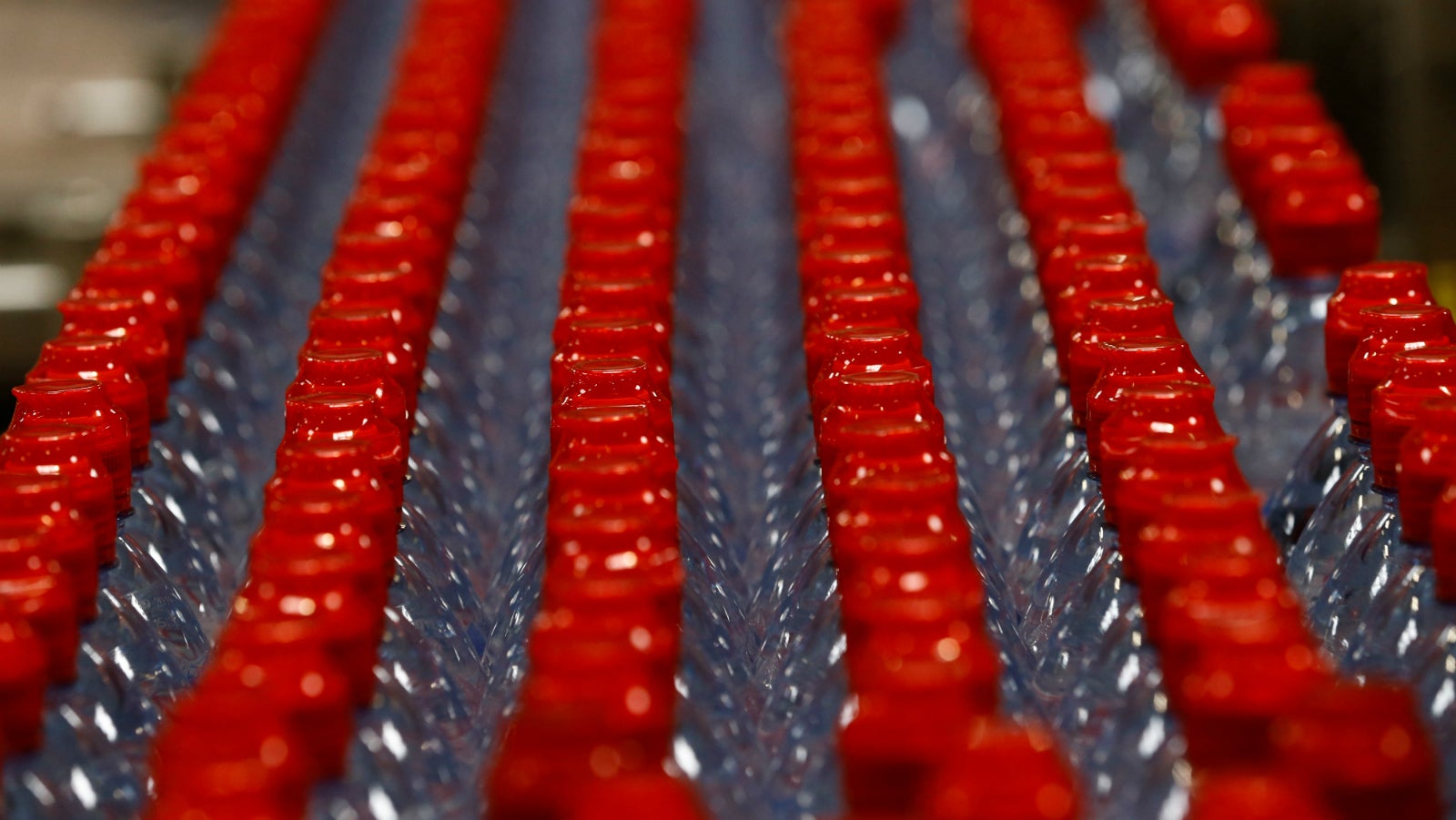Indians are guzzling bottled water like never before
India has the world’s largest population without access to clean drinking water. Not surprisingly, sales of bottled water have been soaring here.


India has the world’s largest population without access to clean drinking water. Not surprisingly, sales of bottled water have been soaring here.
The growth of this category—19% between 2016 and 2017 in India—outpaced those in any other major global market, a March 22 note from research firm Mintel said. “This growth is being driven by rising incomes, consumer concerns over hygiene, and convenience needs, particularly when out of the home,” said Alex Beckett, associate director for food and drinks at Mintel.
Between 2012 and 2017, Rs9,010 crore ($1.38 billion) worth of bottled water was sold in the country, growing at 184%, according to data from research firm Euromonitor. For comparison, fizzy drink sales grew 56% from Rs9,100 crore ($1.4 billion) to Rs14,200 crore ($2.1 billion) during the same period.
Meanwhile, volume growth stood at over 150% from 5.3 billion litres in 2012 to 13.3 billion litres in 2017, Euromonitor estimates.
So, who’s buying all this bottled water? It was mostly urban Indian consumers with higher disposable income but facing an acute shortage of potable water, according to Mintel’s research.
For years, consumers in hot and humid India drank copious amounts of colas and home-made beverages. However, recent trends have shown a marked shift. Over the past few years, people in Asia’s third-largest economy have become more sophisticated and health-conscious. This has resulted in products like packaged juices, ethnic drinks, and bottled water growing at a faster clip. The government, too, chipped in recently by imposing higher taxes on sugary drinks, citing health concerns.
Meanwhile, a recent study published by the State University of New York found particles of plastic present in bottled water brands the world over, including those sold in India. But thirsty Indians are going to keep wanting more of them anyway. The category is projected to grow at over 20% for the next five years, according to Euromonitor.